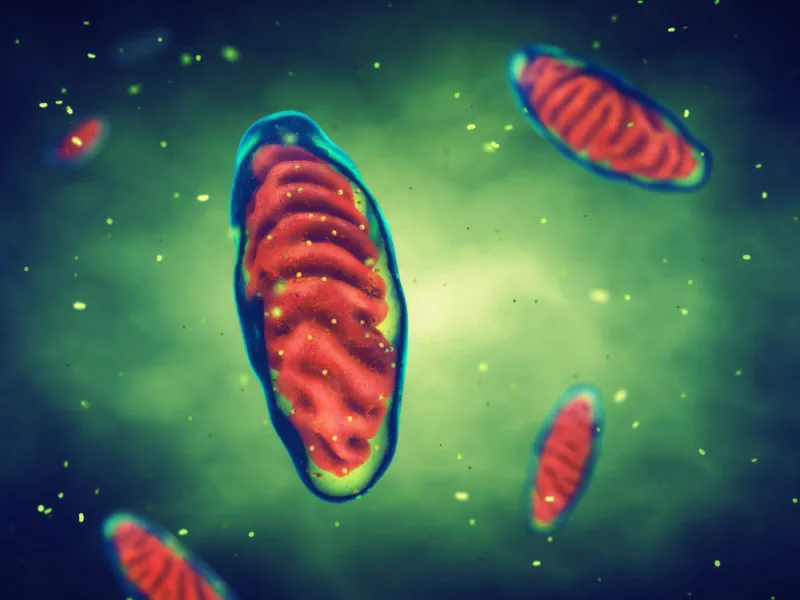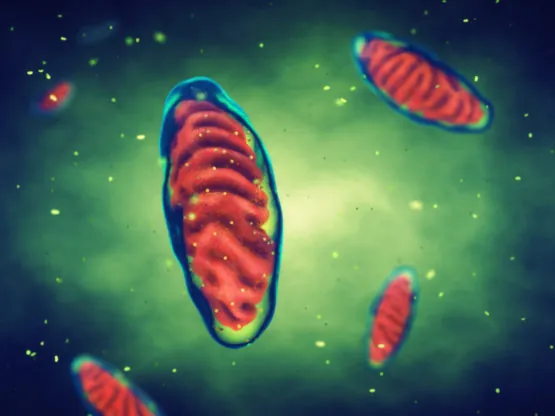Today, we will be taking a look at a new study showing that an NAD+ precursor was able to improve mitochondrial function in cells and flies with a model of Parkinson’s disease.
While mitochondrial dysfunction is emerging as key in Parkinson’s disease (PD), a central question remains whether mitochondria are actual disease drivers and whether boosting mitochondrial biogenesis and function ameliorates pathology. We address these questions using patient-derived induced pluripotent stem cells and Drosophila models of GBA-related PD (GBA-PD), the most common PD genetic risk. Patient neurons display stress responses, mitochondrial demise, and changes in NAD+ metabolism. NAD+ precursors have been proposed to ameliorate agerelated metabolic decline and disease. We report that increasing NAD+ via the NAD+ precursor nicotinamide riboside (NR) significantly ameliorates mitochondrial function in patient neurons. Human neurons require nicotinamide phosphoribosyltransferase (NAMPT) to maintain the NAD+ pool and utilize NRK1 to synthesize NAD+ from NAD+ precursors. Remarkably, NR prevents the age-related dopaminergic neuronal loss and motor decline in fly models of GBA-PD. Our findings suggest NR as a viable clinical avenue for neuroprotection in PD and other neurodegenerative diseases.
What is Parkinson’s disease?
Parkinson’s disease (PD) is a severely debilitating neural disease whose incidence rises with age; it impairs sufferers’ independence by reducing their mobility, stiffening their muscles, and causing tremors.
Research increasingly suggests that mitochondrial dysfunction, one of the hallmarks of aging, plays an important role in PD, and a recent study adds further support to this idea by showing that nicotinamide riboside improves mitochondrial function in neurons derived from PD patients and has neuroprotective effects in fly models of the disease [1].
Cause or effect?
The fact that mitochondria become dysfunctional in aged neurons has recently been shown by Salk researchers; however, a team at the Hertie Institute for Clinical Brain Research and Tübingen University wanted to find out if, in the case of the neurons constituting the so-called substantia nigra, mitochondrial dysfunction was a cause or an effect of Parkinson’s disease. The substantia nigra is an area of the brain rich in dopaminergic neurons and is heavily involved in movement control; in PD patients, these neurons tend to die off.
To find out the role of defective mitochondria in the disease, the researchers sampled skin cells from PD patients with a defective GBA gene—this defect being a frequent risk factor for PD—turned them into pluripotent stem cells, and, finally, turned these into neurons; these neurons had defective mitochondria and therefore lower energy available.
At this point, the researchers tried to boost the cells’ energy by supplying them with nicotinamide riboside, a form of vitamin B3 that is a precursor to the NAD+ coenzyme, which plays a central role in oxidative phosphorylation—a metabolic pathway used by mitochondria to extract energy from food. As a result, NAD+ levels in the treated cells rose and so did their energy levels, even fostering the creation of new mitochondria.
However, positive effects in the petri dish don’t always translate into living beings; for this reason, the researchers tried a similar approach in vivo using a fly model of Parkinson’s disease. A group of GBA-knockout flies was supplied with nicotinamide riboside-enriched feed, whereas a control group wasn’t. While the control group continued to exhibit typical symptoms of the disease—poorer motor skills as they aged—the treatment group fared much better, retaining more neurons and more neuronal mobility for a longer time.
Conclusion
This study provided further evidence that faulty mitochondria are a cause, not an effect, of Parkinson’s disease; additionally, the researchers suggest that while NAD+ precursors, in general, may constitute viable therapeutic avenues against the disease, nicotinamide riboside might be a prime choice in that it is readily available, has extremely low toxicity, and is better able to cross the blood-brain barrier—a crucial feature needed of any drugs that are supposed to affect the brain. Naturally, flies are not humans, and it is not yet established that this substance can yield benefits in people, but further studies may help shed light on that.
Literature
[1] Deleidi, M., Whitworth, A.J., Gasser, T., …, Baden, P., Ivanyuk, D., Schöndorf, D.C. (2018). The NAD+ Precursor Nicotinamide Riboside Rescues Mitochondrial Defects and Neuronal Loss in iPSC and Fly Models of Parkinson’s Disease. Cell Reports.



